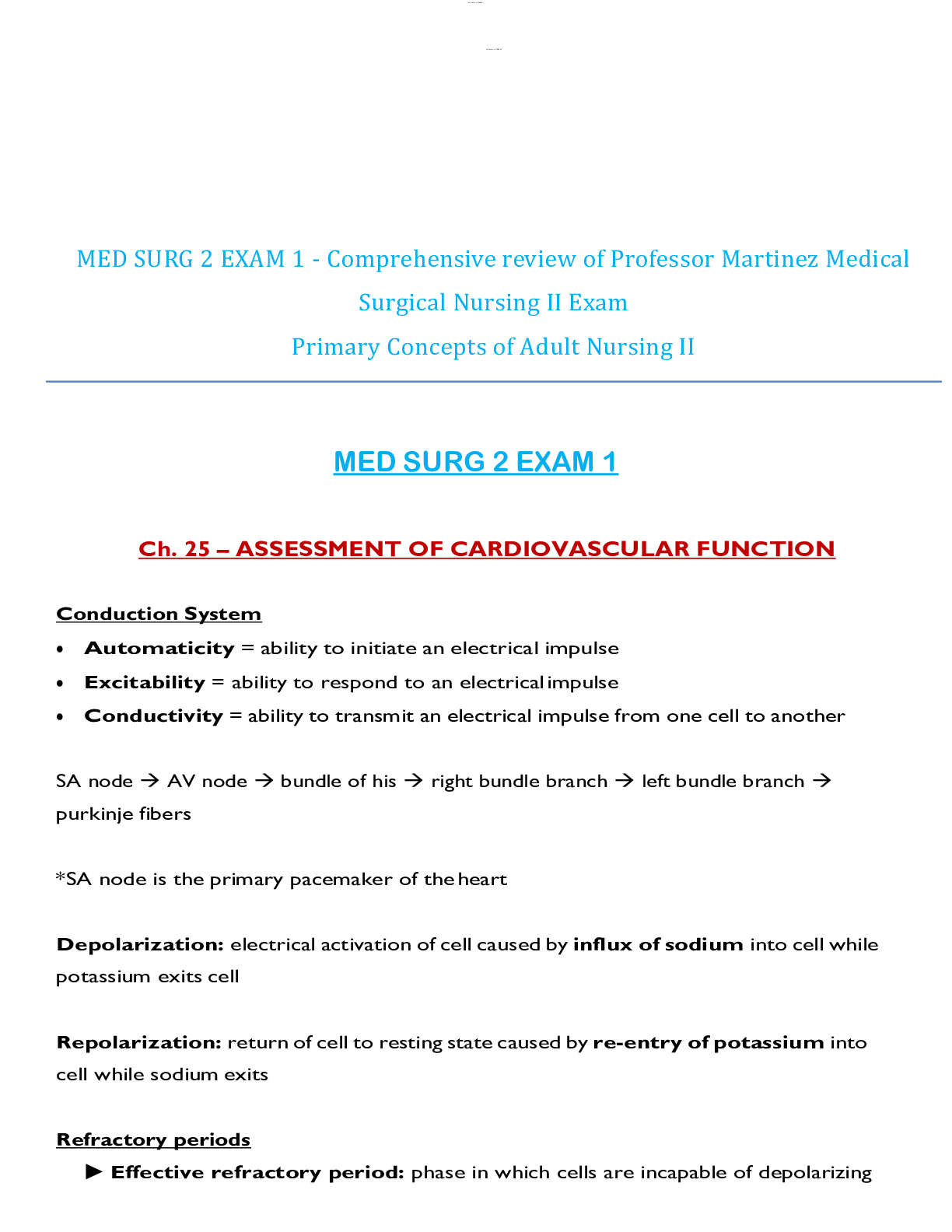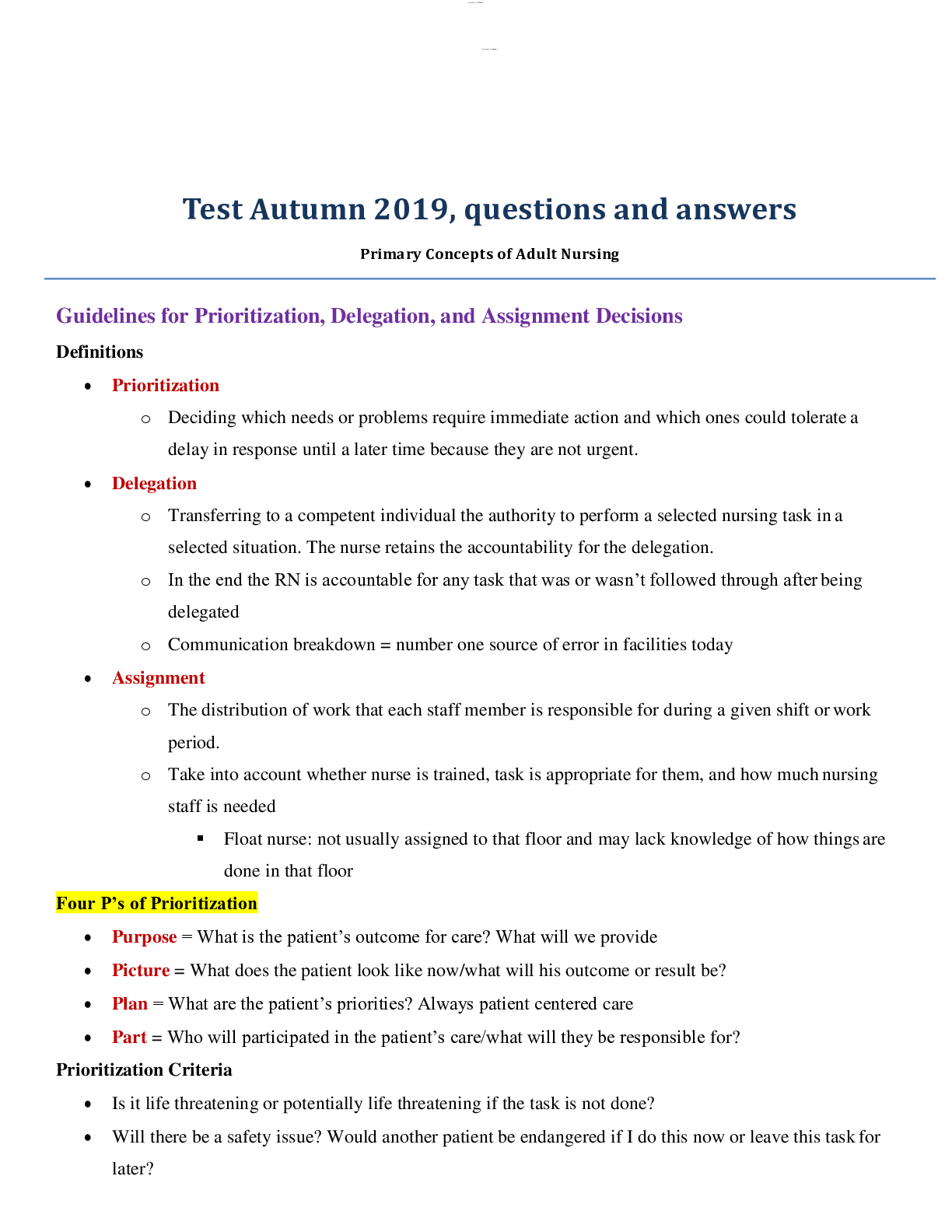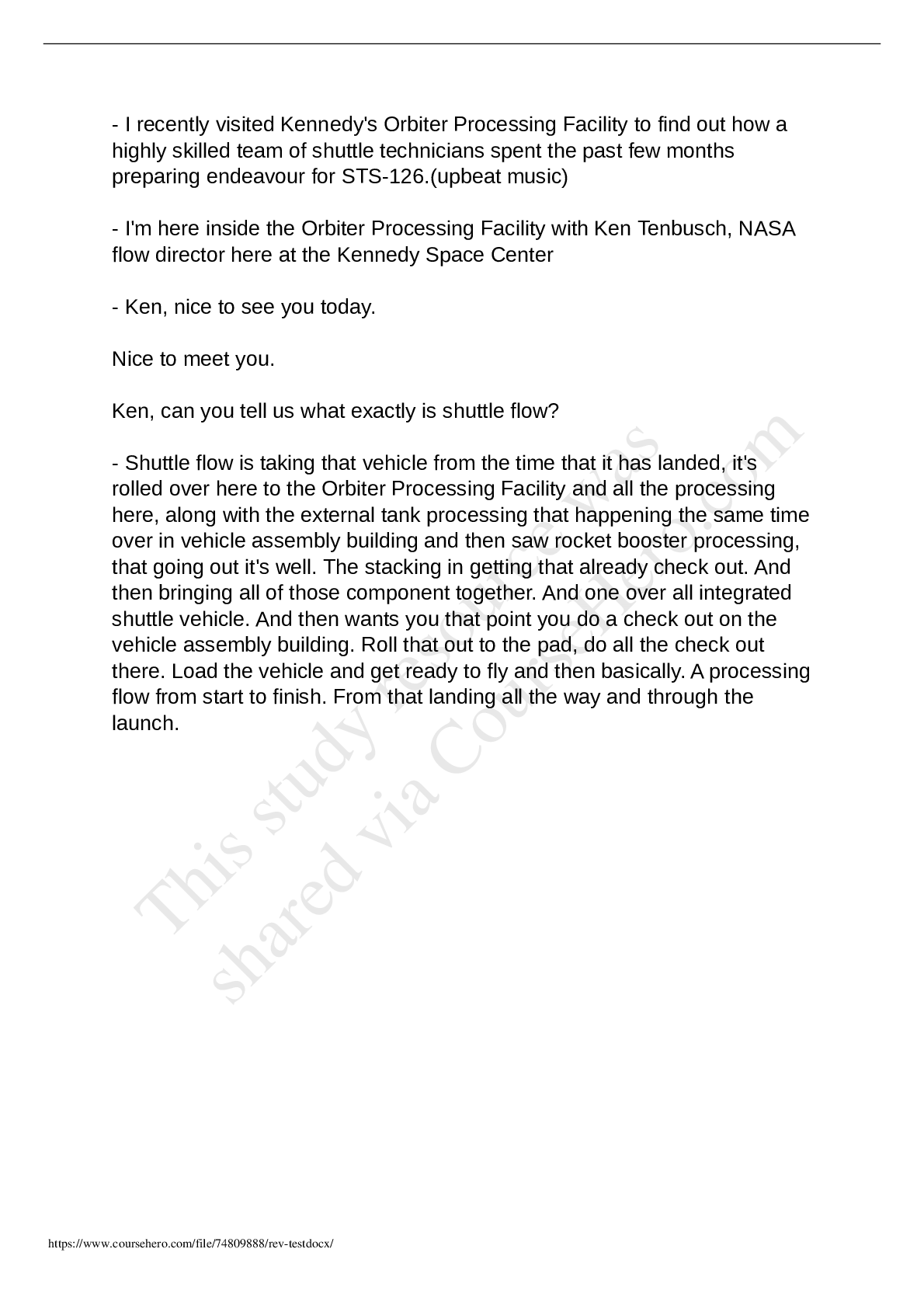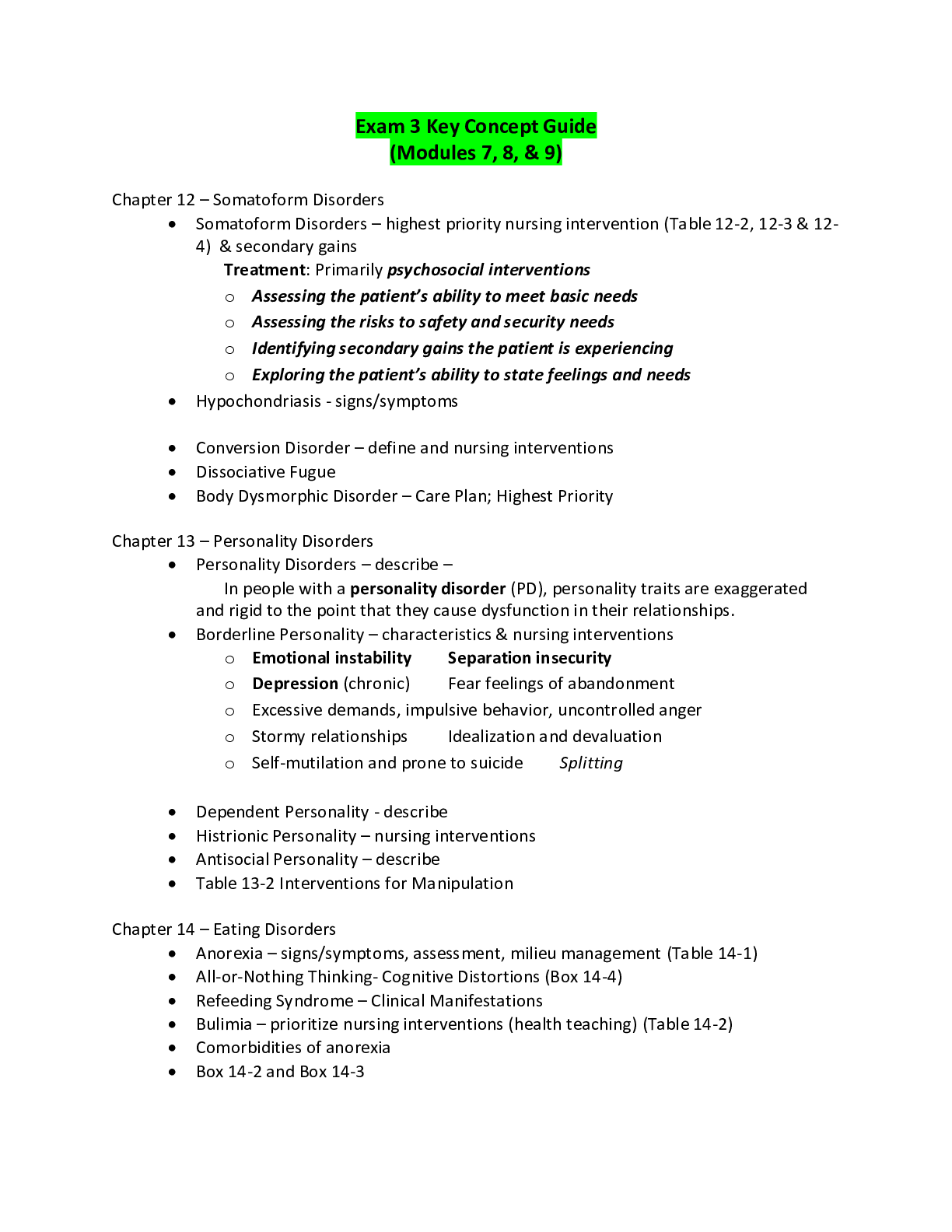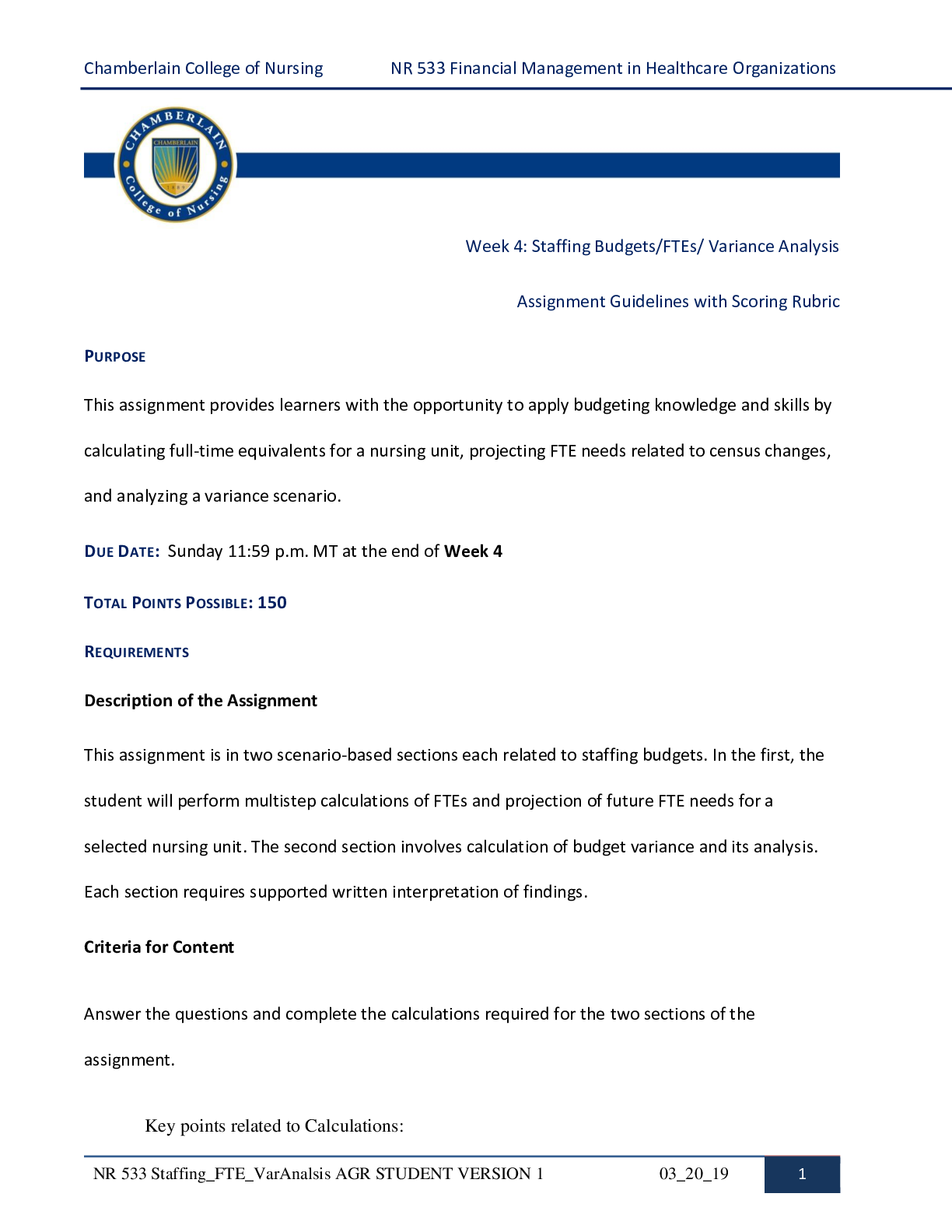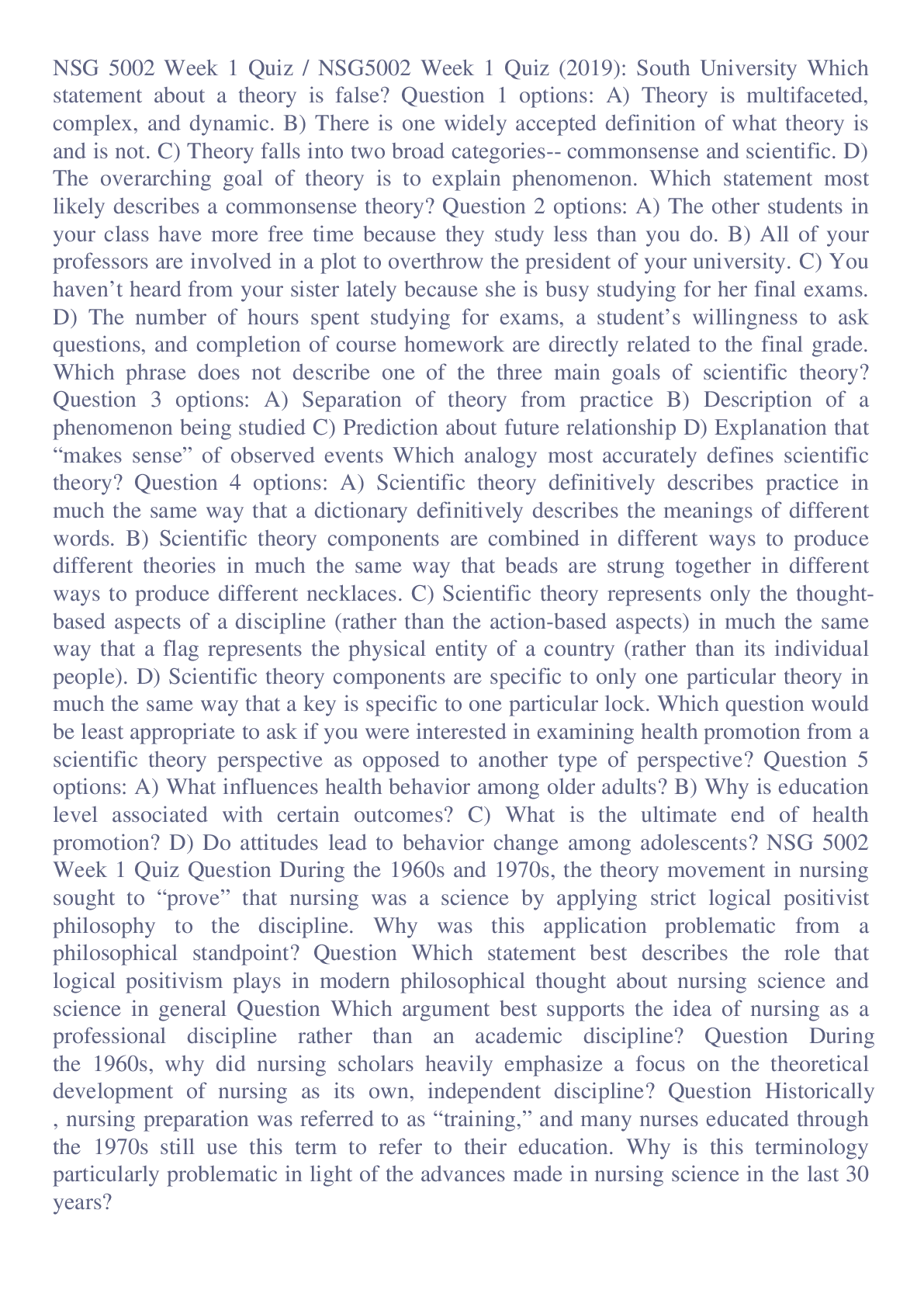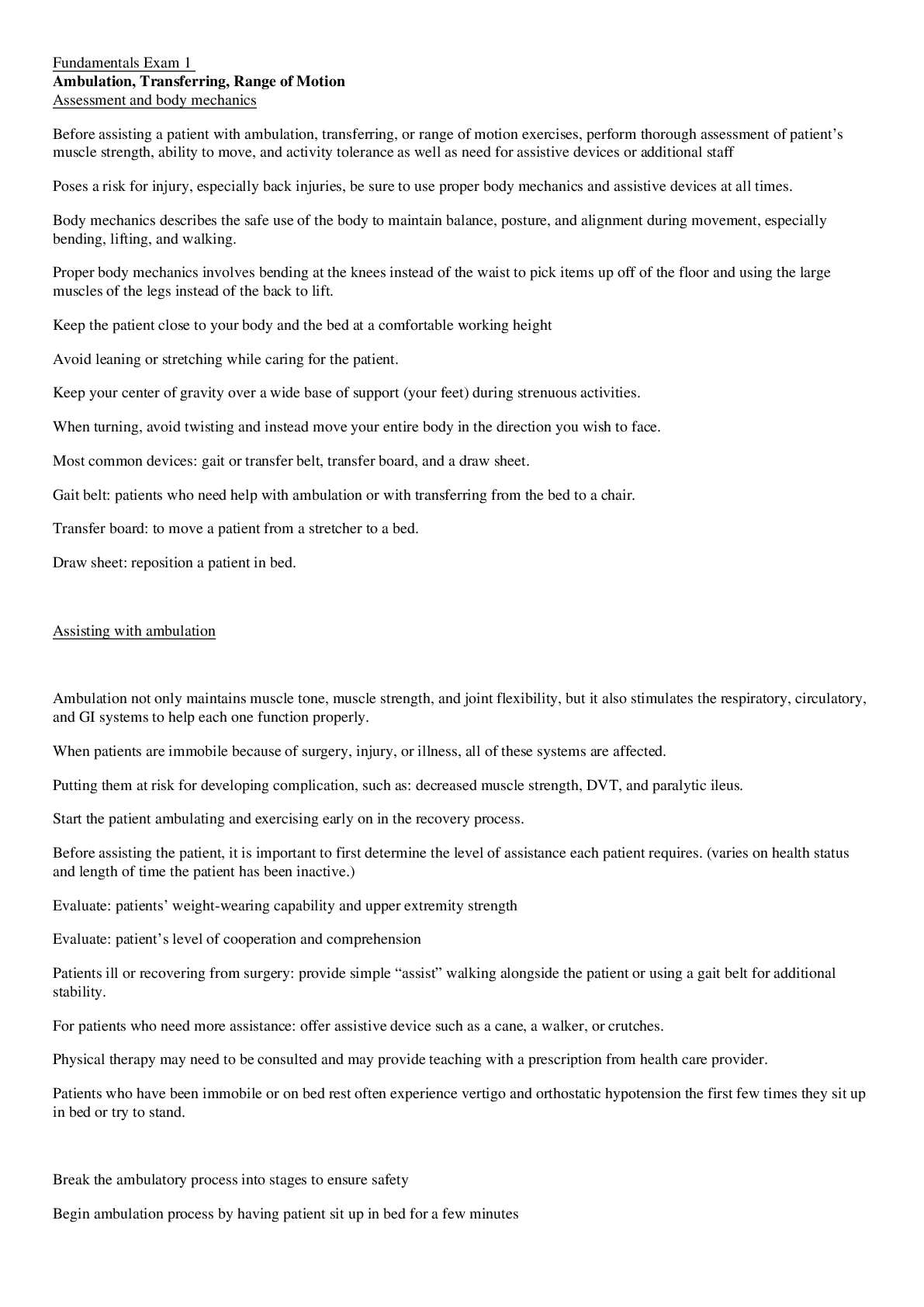*NURSING > STUDY GUIDE > Med Surg Exam 3 Notes and Study Guide: Primary Concepts of Adult Nursing. Disease Analysis: by Diag (All)
Med Surg Exam 3 Notes and Study Guide: Primary Concepts of Adult Nursing. Disease Analysis: by Diagnostics, Clinical manifestations, Medical management and Nursing management.
Document Content and Description Below
Med Surg Exam 3 Notes Primary Concepts of Adult Nursing (Nova Southeastern University) Hypothyroidism *Hyposecretion of thyroid hormoneslowed metabolic rate* • Thyroid deficiency can aff... ect all body functions and can range from mild, subclinical forms to • Clinical manifestations o Extreme fatigue (makes it difficult for person to • Medical management o Objectives: restore a normal metabolic state by replacing the missing hormone, as well as prevention of disease progression and complications • Nursing management o Medications are administered to the patient with extreme caution because of the potential for altered metabolism and excretion, depressed metabolic rate and respiratory status Med Surg Exam 3 Hyperthyroidism *form of thyrotoxicosis resulting from excessive synthesis and secretion of thyroid hormone by the thyroid* • Clinical manifestations o Nervousness; emotionally hyper excitable, irritable, apprehensive, cannot sit quietly, o T4 • Medical management o Appropriate treatment depends on underlying cause • Nursing management o Nutritional status: appetite is increased but may be satisfied by several well balanced meals of small size. Avoid highly seasoned foods to reduce diarrhea. Weight and dietary intake are 2 Med Surg Exam 3 Thyroid Cancer/Thyroidectomy • Diagnostics • Medical management o Treatment of choicesurgical removal (thyroidectomy) Attempts are made to spare parathyroid tissue to reduce risk of post op hypocalcemia • Nursing management o Important pre-op goals: prepare patient for surgery and reduce anxiety Quiet and relaxing activities are encouraged o Post-op care Periodically assess surgical dressings Rest, relaxation, adequate nutrition and avoid putting strain on incision 3 Med Surg Exam 3 Pituitary Hypersecretion/Hyposecretion *anterior pituitary: FSH, LH, ACTH, TSH, GH* • Hypersecretion ACTH TSH • Hyposecretion o Can result from disease of pituitary gland itself or disease of hypothalamus o Result is extreme weight loss, emaciation, atrophy of all endocrine glands and organs, 4 Med Surg Exam 3 Hyperparathyroidism *caused by overproduction of parathormone by parathyroid glands and is characterized by bone decalcification and development of renal calculi containing calcium* • Diagnostics o Elevation of serum calcium levels and an elevated concentration of parathormone • Medical • Nursing • Complication: hypercalcemic crisis o Acute hypercalcemic crisis can occur with extreme elevation of serum calcium levels 5 Med Surg Exam 3 Hypoparathyroidism *caused by abnormal parathyroid development, destruction of glands, and vitamin D deficiency* • Most • Diagnostics o Positive Chvostek’s sign Sharp tapping over facial nerve causes spasm or twitching of mouth, nose & eye o Positive Trousseau’s sign XRAY shows increased bone density • Medical o Goal: increase serum calcium level to 9 or 10 mg/dL (2.2 to 2.5 mmol/L) and to eliminate egg yolk are restricted due to high phosphate • Nursing o Care of post op patient directed toward detecting early signs of hypocalcemia and anticipating signs of tetany, seizures, and respiratory difficulties 6 Med Surg Exam 3 Pheochromocytoma *tumor that is usually benign and originates from chromaffin cells of the adrenal medulla* • Clinical manifestations o Typical triad: headache, diaphoresis, and palpitations in patients with hypertension • Diagnostic o 5 Hs Hypertension, headache, hyperhidrosis (excessive sweating), hypermetabolism, and hyperglycemia • Medical o During an attack of hypertension, tachycardia, anxiety, and the other symptoms of pheochromocytoma, bed rest with head of the bed elevated is prescribed to promote an • Nursing 7 Med Surg Exam 3 Adrenal Insufficiency (Addison’s Disease) *occurs when adrenal cortex function is inadequate to meet the patient’s need for cortical hormones* • Autoimmune or idiopathic atrophy of the adrenal glands is responsible for the vast majority of cases • Clinical manifestations o Muscle weakness, anorexia, GI symptoms fatigue, o of untreated • Diagnostics o Confirmed by lab tests (hypoglycemia, hyponatremia, hyperkalemia, leukocytosis) • Medical o Immediate treatment is directed toward combating circulatory shock Restore blood circulation, administer fluids and corticosteroids, monitor vital signs, • Nursing o Assessing the patient Presence of symptoms of fluid imbalance and patient’s level of stress 8 Med Surg Exam 3 Cushing Syndrome *excessive adrenocortical activity* • Commonly caused by the use of corticosteroid medications and is infrequently the result of excessive corticosteroid production secondary to hyperplasia of the adrenal cortex • Clinical manifestations o Central type obesity (buffalo hump in the neck, a heavy trunk, relatively thin extremities) o Skin is thin, fragile, and easily traumatized (ecchymosis and striae develop) • Diagnostics o Serum cortisol, urinary cortisol, and low dose dexamethasone • Medical o Surgical removal of tumor is treatment of choice; radiation has Nursing 9 Med Surg Exam 3 Hepatitis • Systemic viral infection that causes necrosis and inflammation of liver cells • Hepatitis A: fecal oral transmitted o No jaundice, many asymptomatic, mild flu Hepatitis B: blood, saliva, semen, vaginal secretions o Major cause of cirrhosis and liver cancer Hepatitis C: blood, sexual contact o Not curable, no benefit from rest or diet o No vaccine Portal Hypertension • Increased pressure throughout portal venous system that results from obstruction of blood flow 10 Med Surg Exam 3 Ascites *increased abdominal girth and rapid weight gain, fluid in peritoneal cavity* • Failure of liver to metabolize aldosterone results in increased sodium and water retention by kidneys • Clinical manifestations • Diagnostics o • Medical o Dietary modifications Goal: negative sodium balance to reduce fluid retention Added salts, butters, canned foods, should be avoided • Signed consent, empty bladder, upright position, monitor for hypovolemia, report increase in temperature, check site for leakage • Nursing o Monitor I&O, abdominal girth, and daily weight 11 Med Surg Exam 3 Hepatic Cirrhosis *replacement of normal liver tissue with fibrosis that disrupts the structure and function of the liver* • Clinical manifestations: liver enlargement, portal obstruction, ascites, infection, peritonitis, edema, • Diagnostics • Medical o Management based on presenting symptoms Antacids used to decrease gastric distress and minimize GI bleeding risk • Nursing: promote rest, improve nutritional status, provide skin care, reduce risk of injury o Jaundice (hyperbilirubin), ascites (low albumin), altered LOC, paracentesis to drain fluid, give o Home teaching: exclusion of alcohol from the diet, sodium restriction in diet 12 Med Surg Exam 3 Hepatic Encephalopathy *neuropsychiatric manifestation of hepatic failure associated with portal hypertension and shunting of blood from portal venous system into the systemic circulation* • Life threatening complication of liver disease that occurs with profound liver failure • This • Clinical manifestations o Earliest symptoms: mental changes and motor disturbances o origin • Diagnostics o Electroencephalogram shows generalized slowing, increase in amplitude of brain waves, and characteristic triphasic waves • Medical o Focuses on identifying and eliminating the precipitating cause, initiating ammonia lowering therapy, minimizing potential medical complications of cirrhosis and depressed consciousness, • Nursing o Maintain a safe environment to prevent injury, bleeding, and infection o Potential for respiratory compromise is great given the patient’s depressed neurologic status 13 Med Surg Exam 3 Cholecystitis *inflammation of the gallbladder* • Causes pain, tenderness, and rigidity of the upper right abdomen that may radiate to the mid sternal area or right shoulder and is associated Gallbladder Surgery • Goals of surgery: relieve persistent symptoms, remove cause of biliary colic, treat acute cholecystitis o Vitamin K may be administered if prothrombin level is low • Post op o Low Fowlers position o Fluids administered IV, soft diet started after bowel sounds return (usually next day) o NG suction (was inserted immediately before surgery) relieves abdominal distention o Pain: administer analgesics, help patient turn, cough, breathe deeply, cover with pillow o Improve respiratory status: deep breaths and cough every hour to expand lungs fully and , abdominal distention, and temperature elevation infection or disruption of GI tract 14 Med Surg Exam 3 Cholelithiasis *calculi/gallstones* • Form in the gallbladder from solid constituents of bile; vary greatly in size, shape and composition • Clinical manifestations • Diagnostics o Ultrasonography is diagnostic procedure of choice because it is rapid and accurate and can be used in patients with liver dysfunction and jaundice • Medical o Major objectives are to reduce the incidence of acute episodes of gallbladder pain and cholecystitis 15 Med Surg Exam 3 Acute Pancreatitis *auto digestion of the pancreas leading to inflammation* • Pancreatic • Clinical manifestations o Severe abdominal pain is major symptom that causes patient to seek medical care • Diagnostics o Serum amylase and serum lipase are elevated o Increased WBC and hypocalcemia also present o XRAY differentiated pancreatitis from other disorders that may cause similar symptoms • Medical o All oral intake withheld to inhibit stimulation of pancreas and its secretion of enzymes • Nursing o Relieve pain and discomfort o Improve breathing pattern: semi Fowlers position to decrease pressure on the diaphragm by a At risk for skin breakdown because of poor nutritional status, enforced bed rest, and restlessness which may result in pressure ulcers and breaks skin integrity Even more increased risk in patient with drains put in (monitor drains for leakage) Turned every 2 hours o Monitor complications 16 Med Surg Exam 3 Fluid and electrolyte disturbances (note skin turgor and mucous membranes, weigh daily, measure I&O, assess for ascites and abdominal girth daily) Chronic Pancreatits *progressive destruction of the pancreas that leads to inflammation* • Clinical manifestations o Severe upper abdominal and back pain, accompanied by vomiting o little as 10% of pancreatic function remains Digestion of proteins and fats is impairedstools become more frequent, frothy, and foul smelling because of impaired fat digestionsteatorrhea • Diagnostics o ERCP is most useful • Medical o Directed toward preventing and managing acute attacks, relieving pain and discomfort, and managing exocrine and endocrine insufficiency of pancreatitis o stays Patient teaching: may experience weight gain and improved nutritional status 17 Med Surg Exam 3 • Type 1 Diabetes Mellitus o Combines genetic, immunologic, and possibly environmental factors contribute to beta cell destruction o Destruction of beta cells results in decreases insulin production, unchecked glucose production by the liver, and fasting hyperglycemia • Type 2 o Insulin resistance and impaired insulin secretion with the increased demand for insulin, the glucose level rises and type 2 diabetes develops o Usually detected incidentally • Clinical manifestations o Class 3 Ps Polyuria and polydipsia: occur as a result of the excess loss of fluid associated with infections • Diagnostics o Elevated A1C • Medical o Main goal is to normalize insulin activity and blood glucose levels to reduce the development of • Nursing o Manage glucose control in hospital setting (blood glucose target 140-180) • Hypoglycemia o Blood glucose falls below 70, insulin reaction o Can occur when there is too much insulin, too little food, or excessive physical activities o 15g fast acting carbohydrates given (no table sugar added) o Unconscious patient1 mg glucagon o Prevented by consistent pattern of eating (snacks may be needed), insulin, and exercise 18 Med Surg Exam 3 • ADH (vasopressin) retains water Diabetes Insipidus *deficiency of ADH* o Without ADH, there is an enormous daily output • May occur secondary to head trauma, brain tumor, or surgical ablation of pituitary gland • Clinical manifestations • Diagnostics o Fluid deprivation test (withhold fluids for 8-12 hours) • Medical o Replace ADH • Nursing o Physical assessment and patient education Signs and symptoms of hyponatremia SIADH *excessive ADH secretion* • Patients cannot excrete a dilute urine, retain fluids, and develop a sodium deficiency • Medical o Eliminate underlying cause, if possible o Restrict fluid intake o Diuretic agents • Nursing o Daily weight 19 [Show More]
Last updated: 1 year ago
Preview 1 out of 19 pages
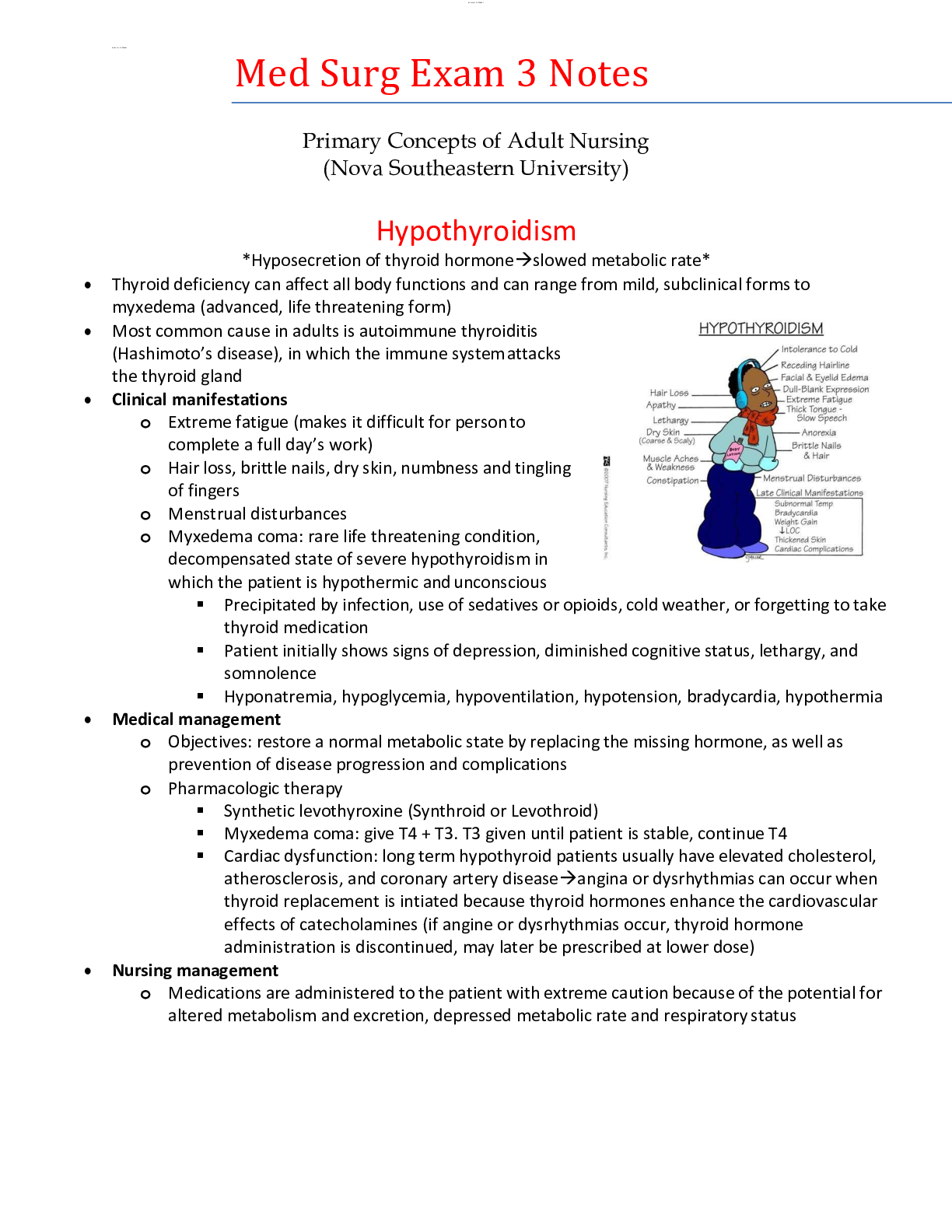
Reviews( 0 )
Document information
Connected school, study & course
About the document
Uploaded On
Sep 01, 2020
Number of pages
19
Written in
Additional information
This document has been written for:
Uploaded
Sep 01, 2020
Downloads
0
Views
228

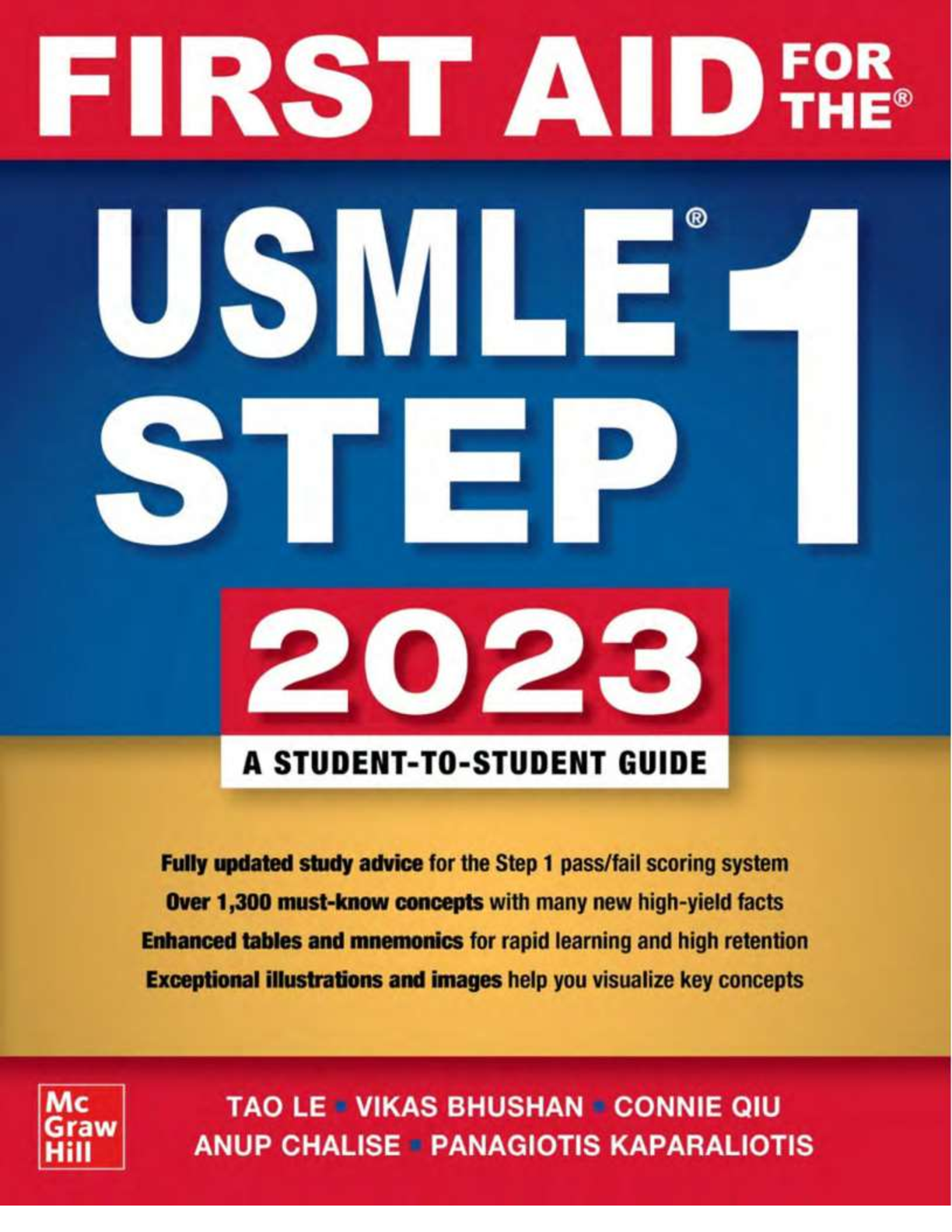

-3-168.png)

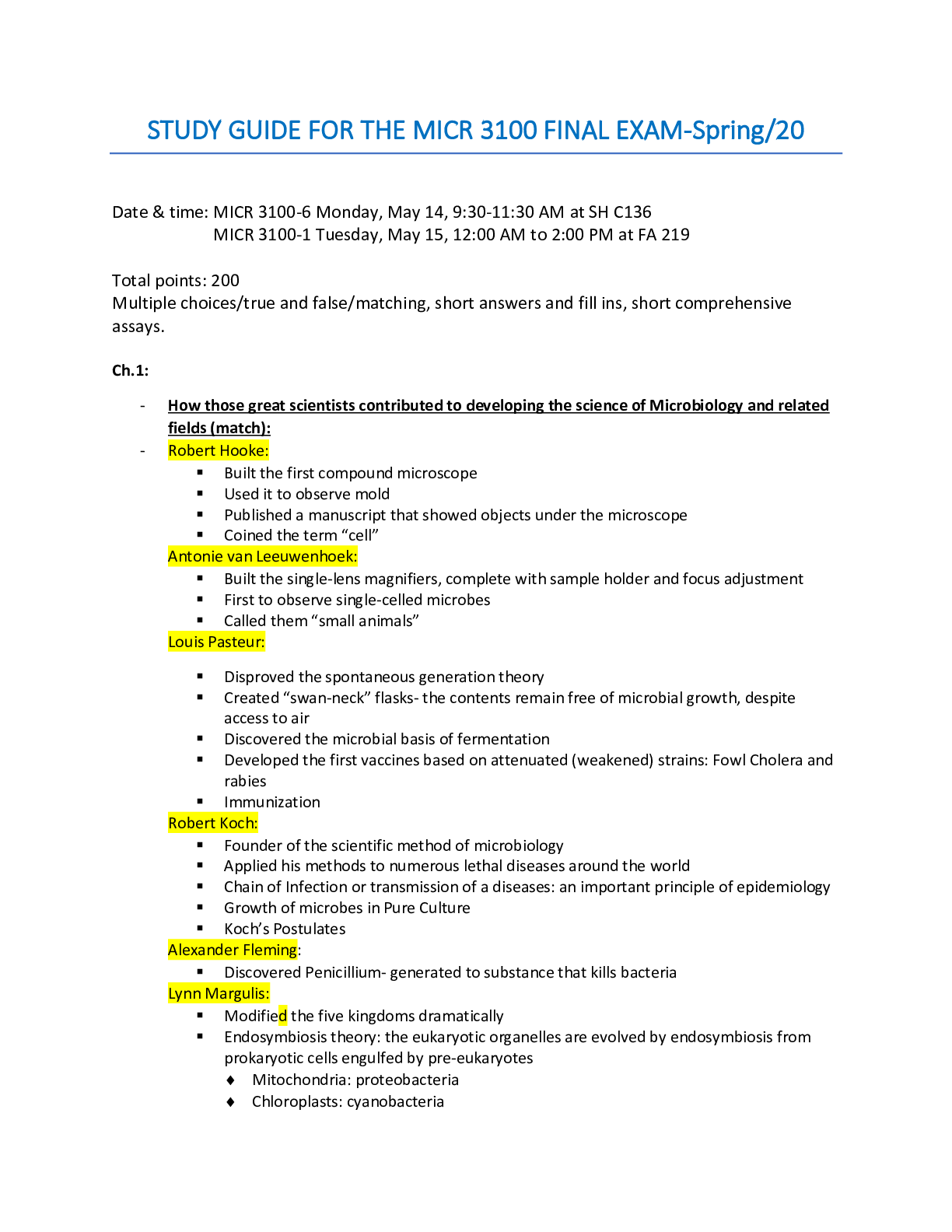

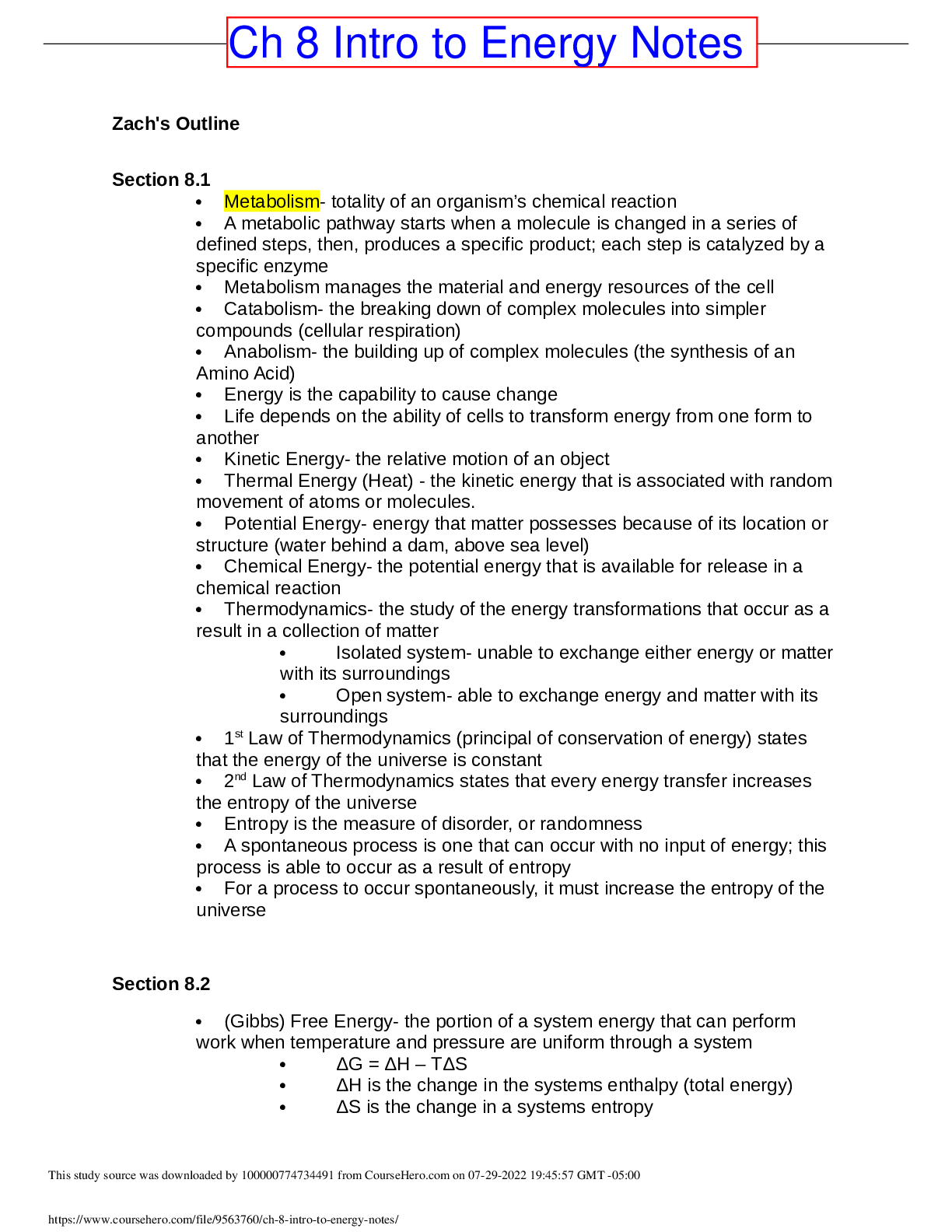

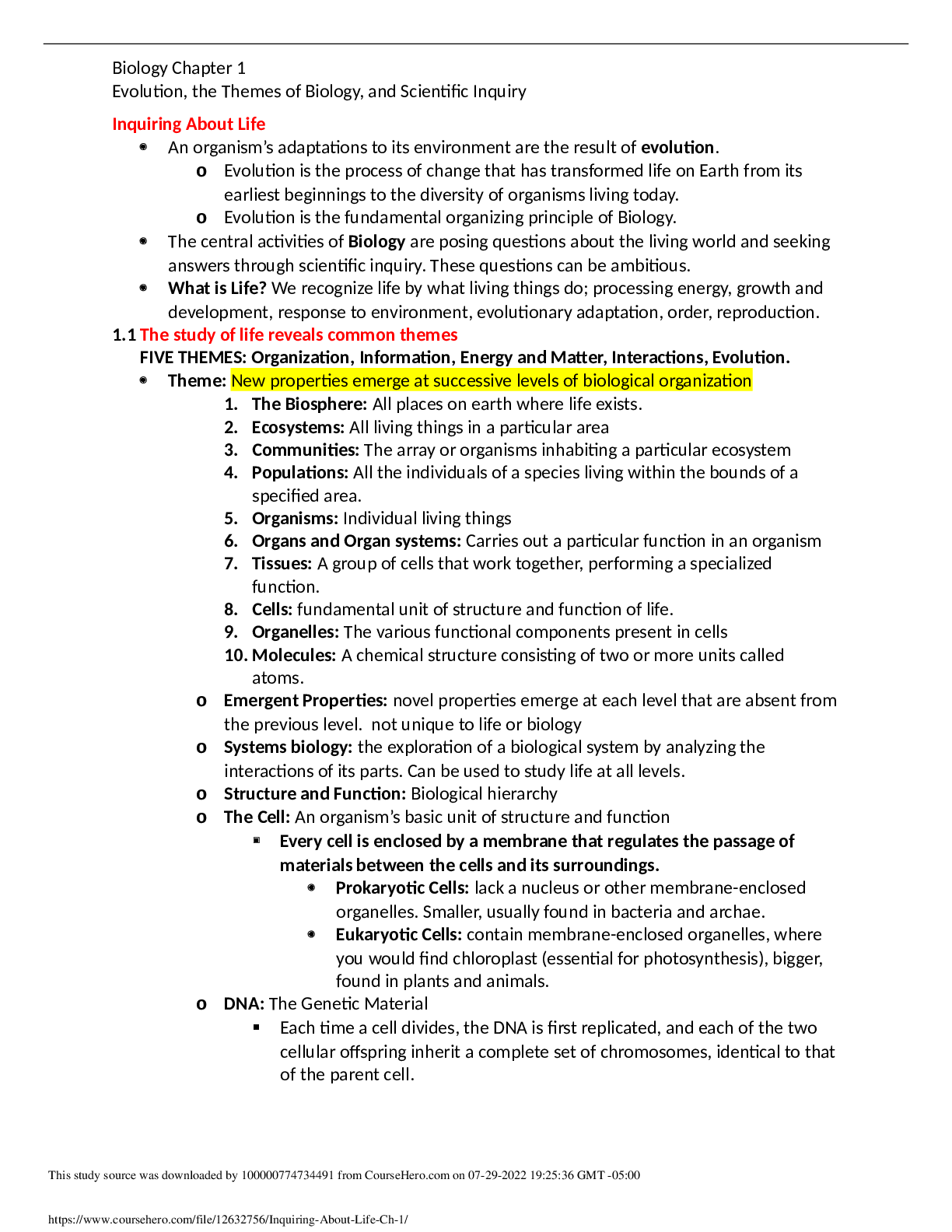
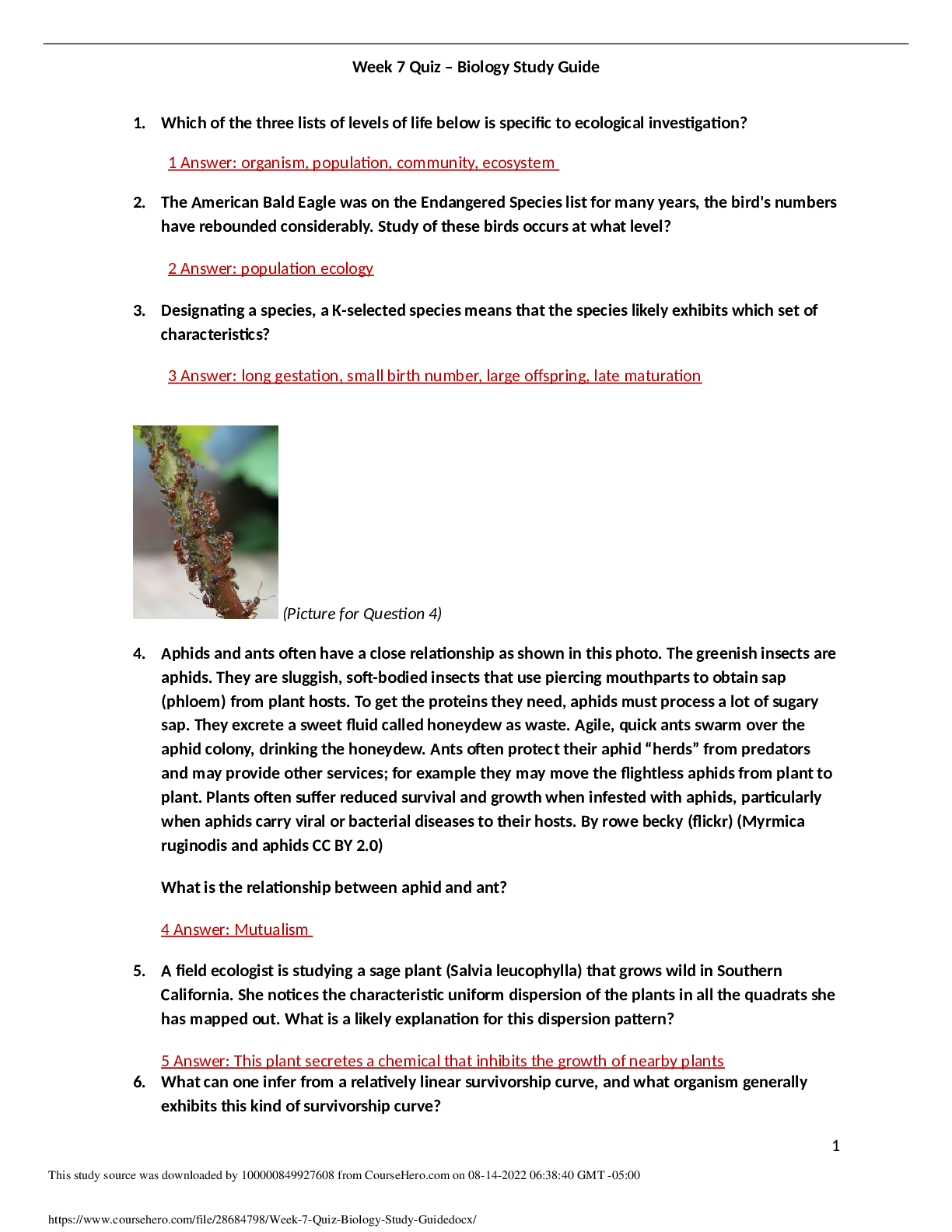

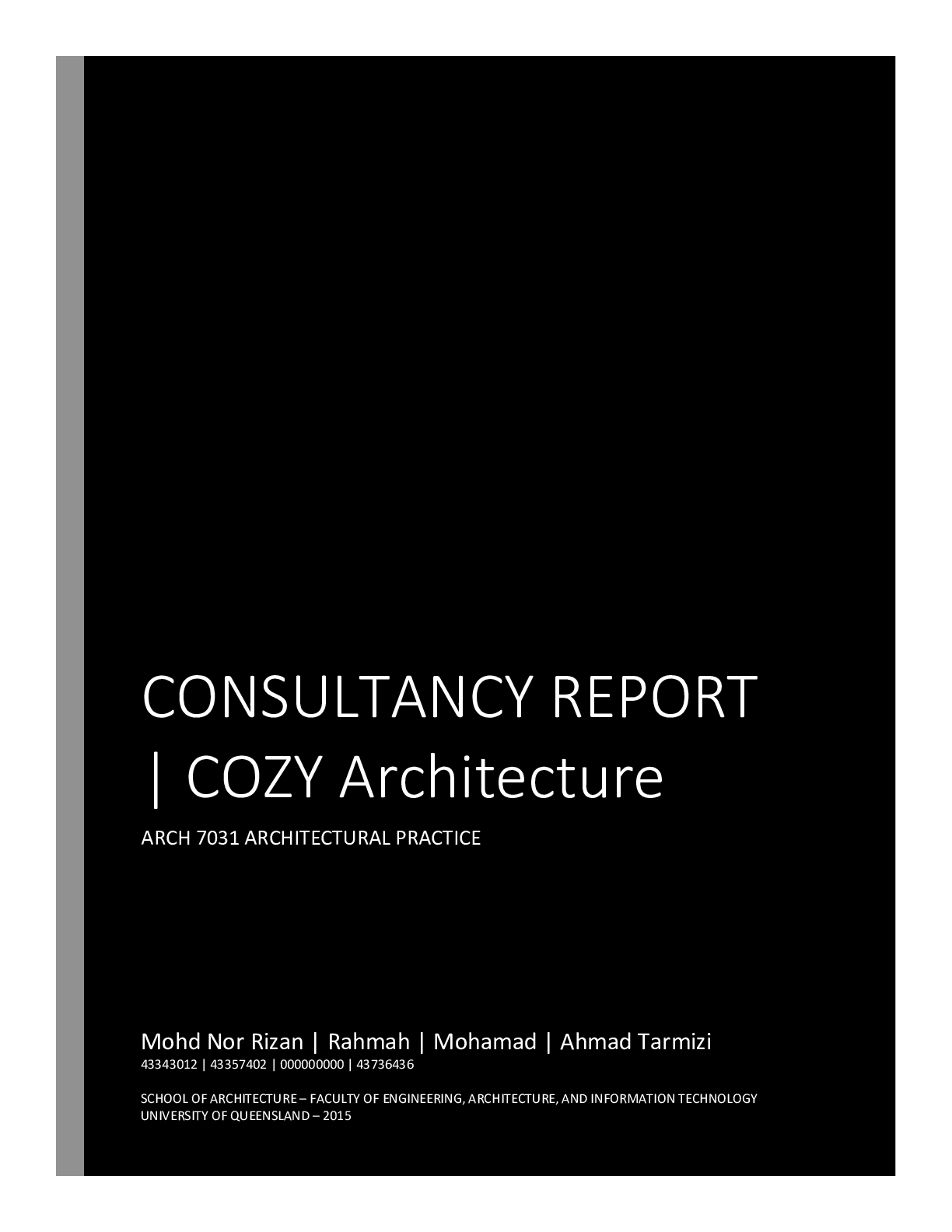

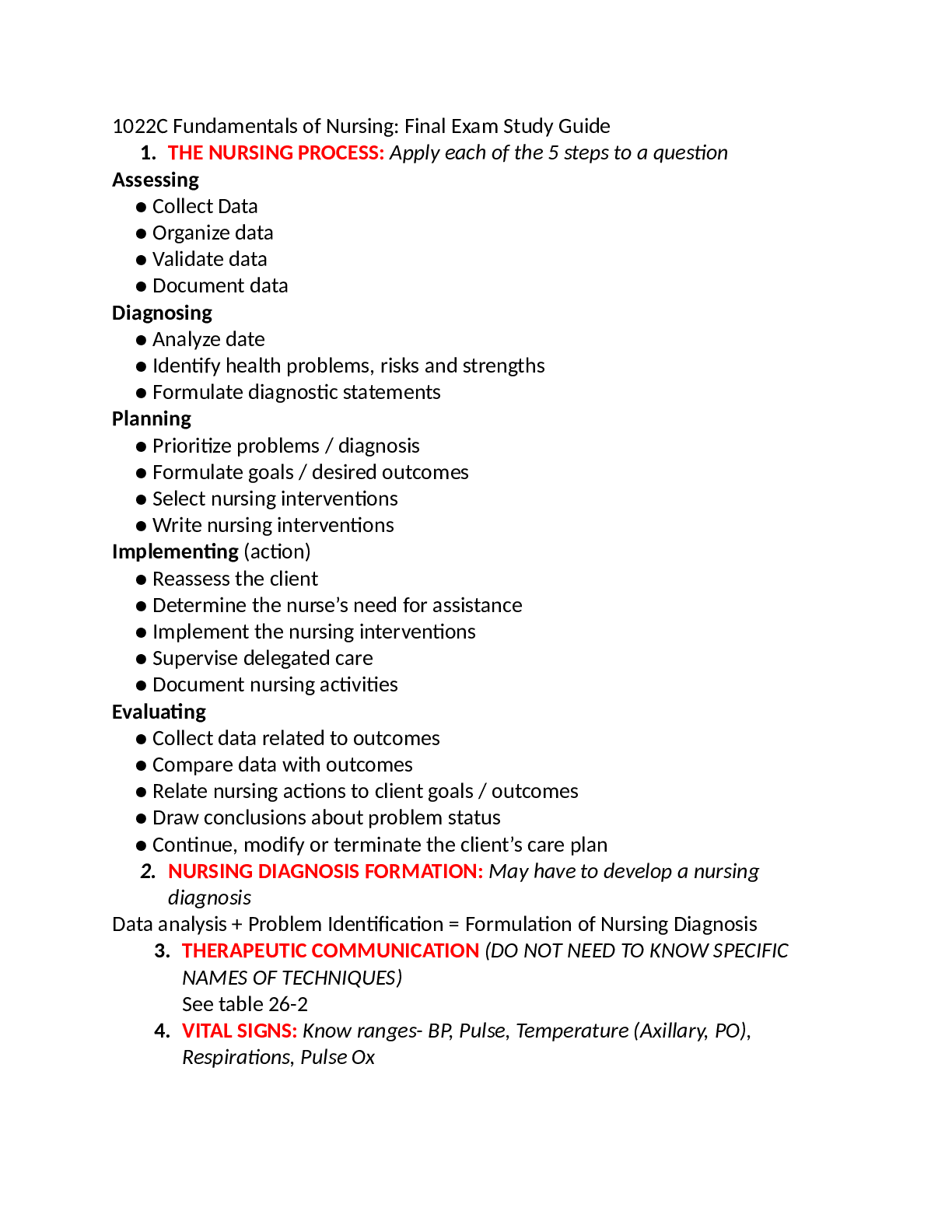
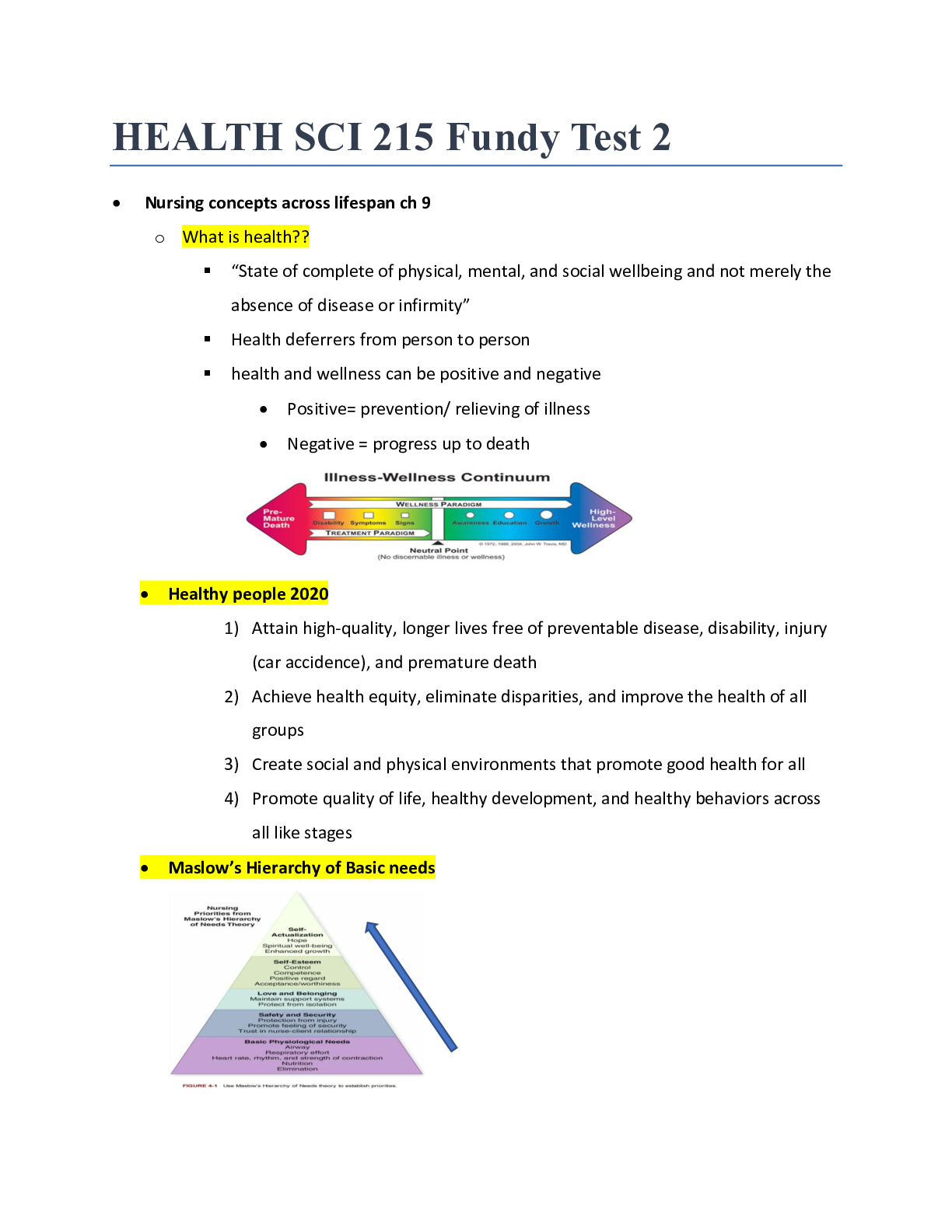
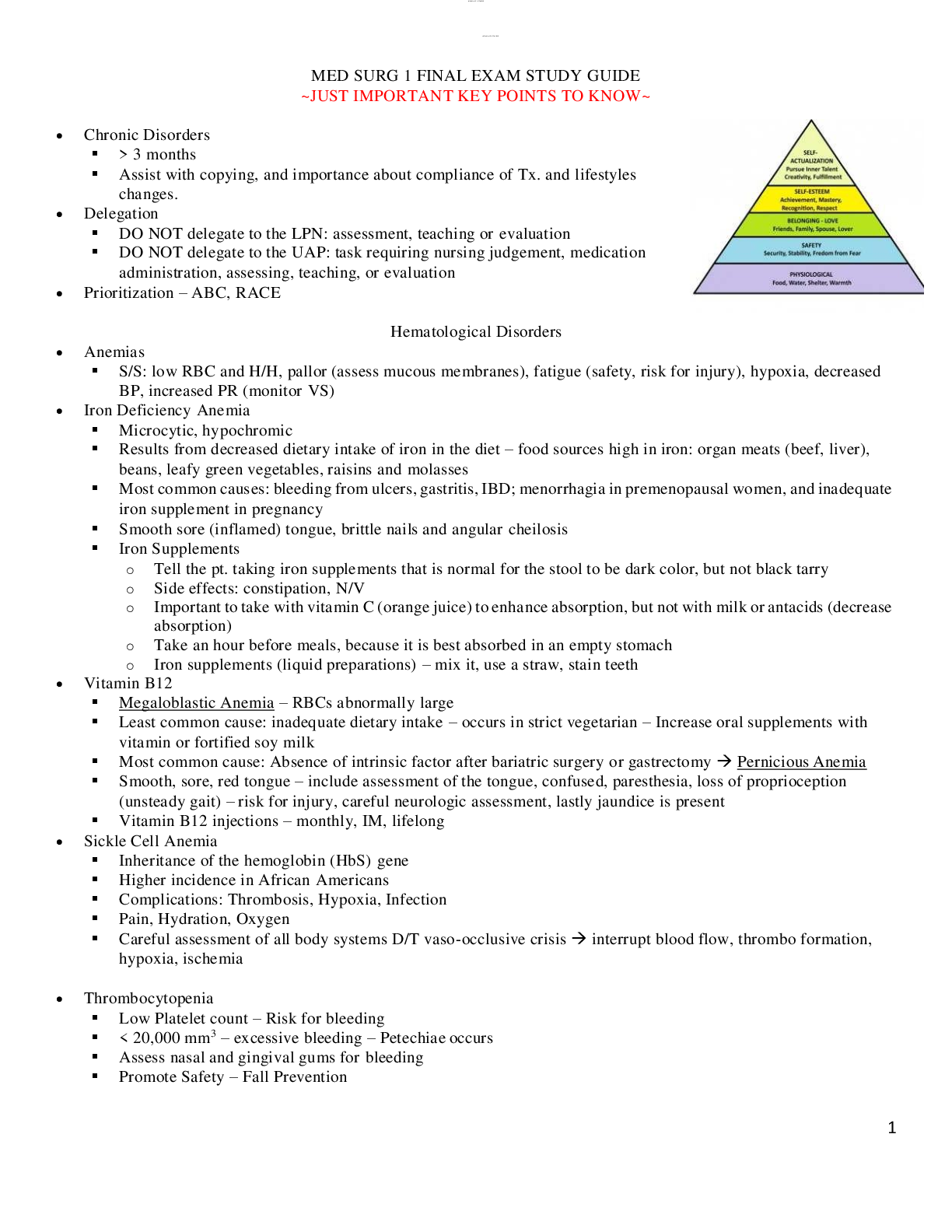
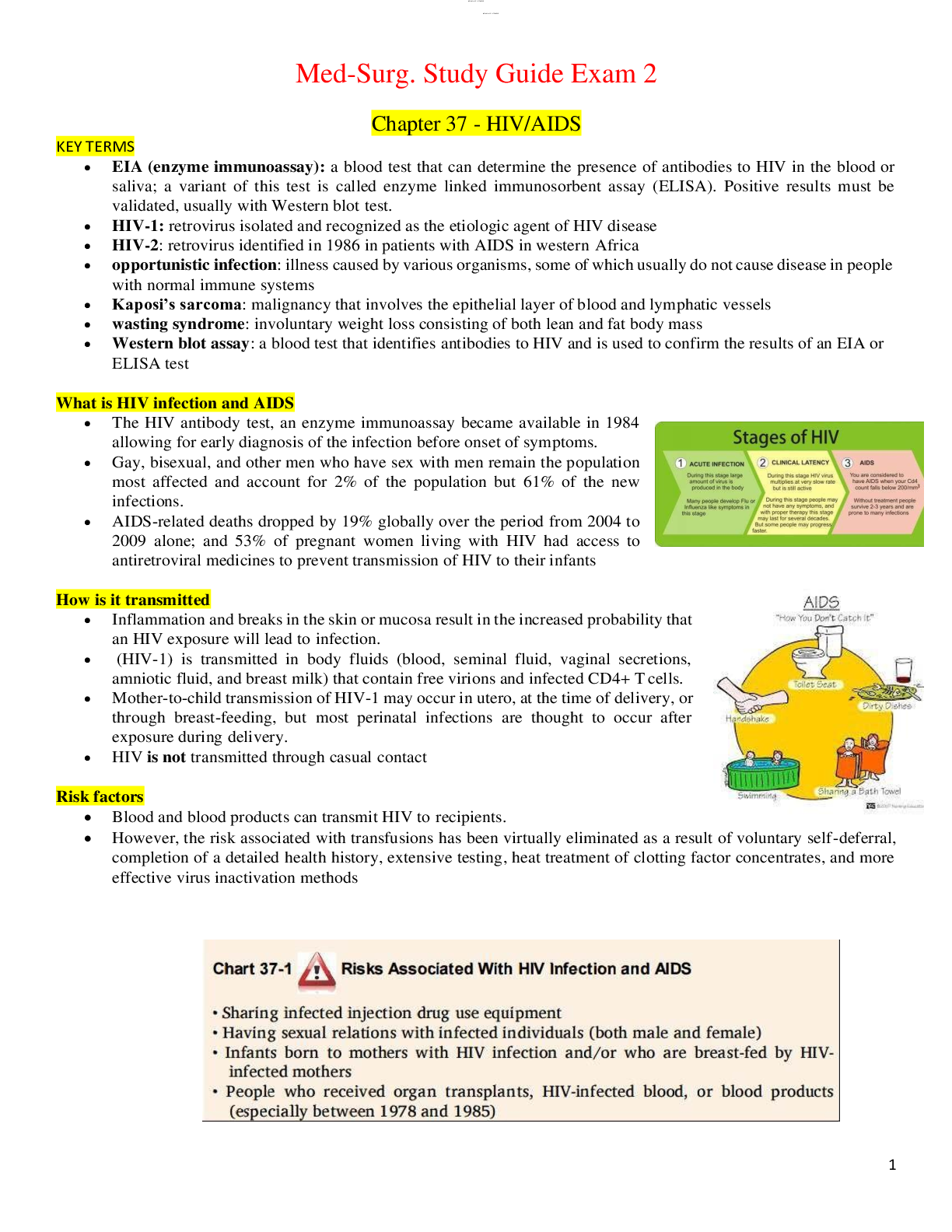
.png)

, Latest Questions and Answers with Explanations for Revision, All Correct Latest Review, (Latest 2021) Correct Study Guide, Download to Score A.png)

